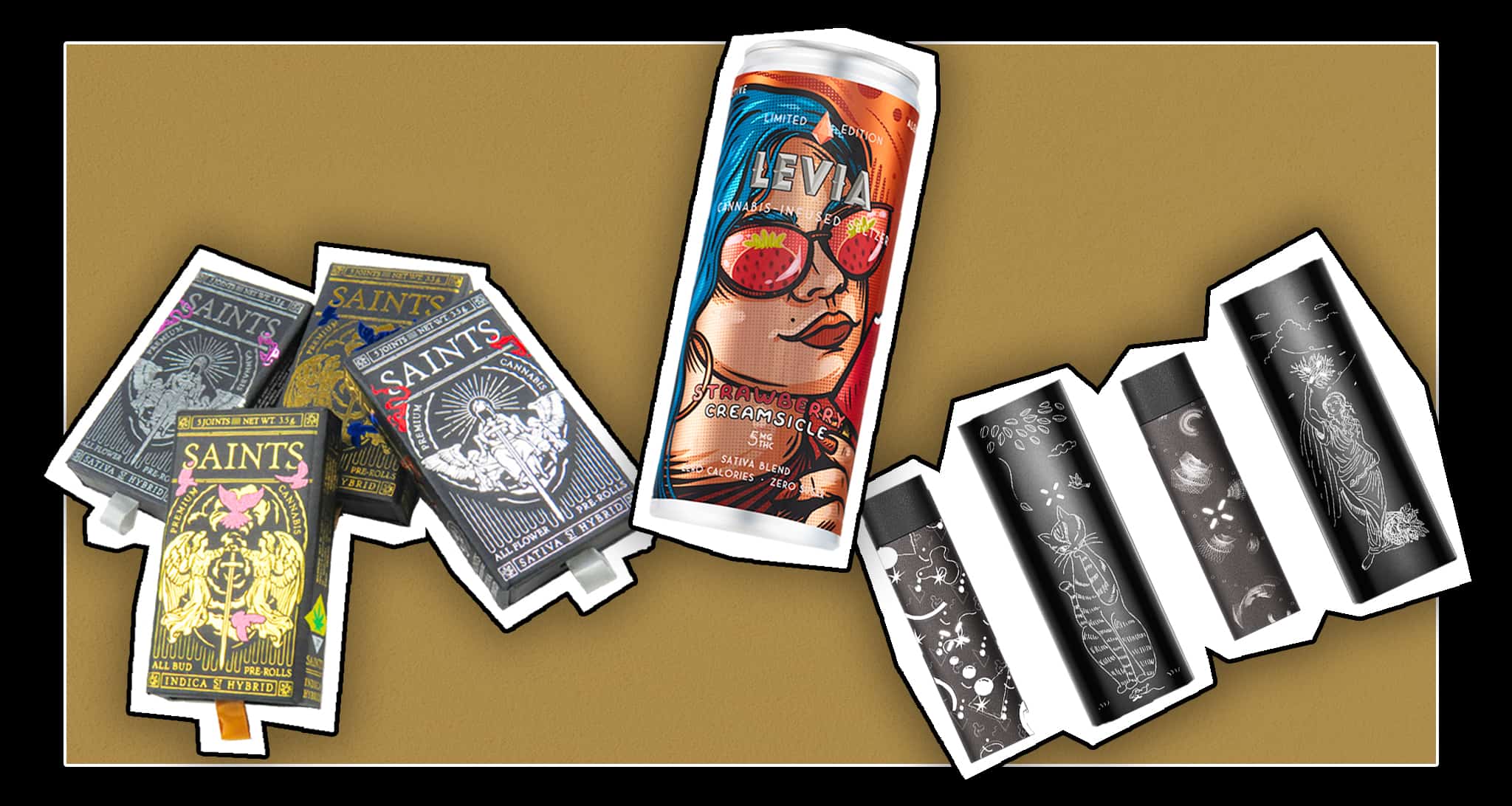Brands don’t have much time to catch consumers’ attention. At all.
Shoppers spend an average of thirteen seconds choosing which brand to purchase when in store, according to a 2018 Ehrenberg-Bass Institute of Marketing Science report. This leaves no time for brands to list ethical practices, tailored effects, or otherwise impressive features unique to the product. So how do brands hold shopper interest long enough to make a conversion?
In the early recreational days, good package design was often enough to stand out. But what happens when every brand on the shelf has hired a great designer? These days, good packaging is no longer turning heads; customers have seen their fair share of sleek, angular, and minimal packages or bright ‘60s-style flower power designs.
Which has some brands digging deeper for unique imagery.
“Saints has been based on collaborations since day one,” explains Lawrence Perrigo, founder of Seattle-based Saints Joints. Their artist collaborations have made their brand stand out from the beginning—they’ve used their joint boxes as showcases for tattoo artists, celebrations of Pride by LGBTQ artists, and even the cover artwork for a Seattle-based novel by a local author. Each iteration is detailed, bold, and eye-catching. Part of the fun of interacting with their products is really interacting with them: reading the backstory, the product details, and admiring the artwork so much that you refuse to toss the package long after the last joint has been puffed.
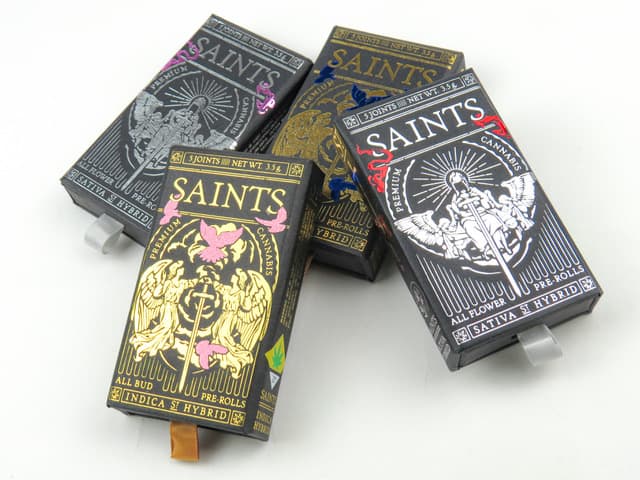
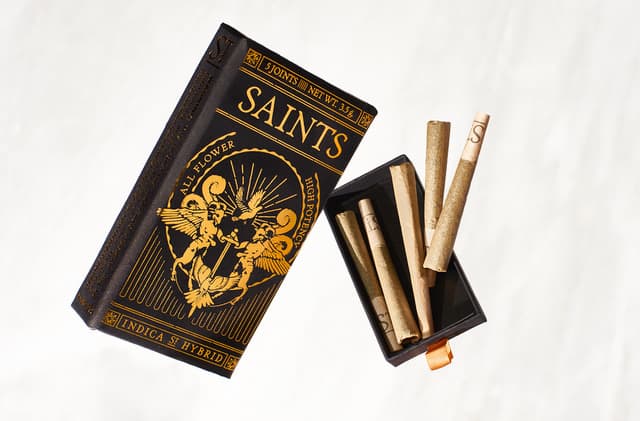
Perrigo has a long history in the Seattle music scene, which plays into his brand strategy. . Holding a box of Saints Joints is akin to holding a cassette or record – you can spend time with it and notice new details each time you pull the box out.
Part of the magic is authenticity. “The most important thing is making sure the collaboration makes sense,” explains Perrigo. In other words, if he’s not into it, and it doesn’t feel reflective of the brand, it’s out.
“Collaborations kind of just come to me in the form of ideas, or sometimes an awesome company or person reaches out and the idea just takes off,” says Perrigo. “I get approached very often but I’m at the point where I want to do multi-layered projects instead of just working with an individual artist.”
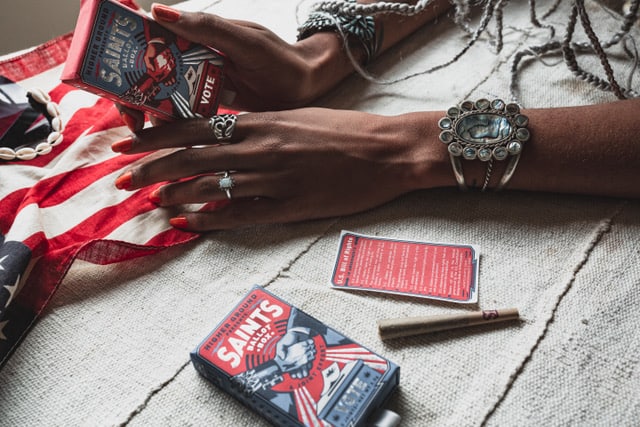
This approach has been fruitful for Perrigo, who stays true to himself and his beliefs through each project. The company’s 2020 ballot box collaboration with Higher Ground contained a mini Bill of Rights, as well as a QR code that takes customers to a page to register to vote. It, of course, also features beautiful artwork. The collaboration was so successful that it was featured in Forbes and won a Clio Cannabis Award.
Saints has a unique success story, but their approach wouldn’t work for every brand. LEVIA has a different strategy.
“Our first major artist collaboration was for LEVIA’s Pomegranate Punch, our limited-edition flavor during the winter of 2021,” explains Troy Brosnan, co-founder of LEVIA. “We connected with Dean McKeever (Keever) after seeing what he was doing with a local brewery’s cans. We knew we wanted a similar artistic expression for our line of cannabis seltzers.”
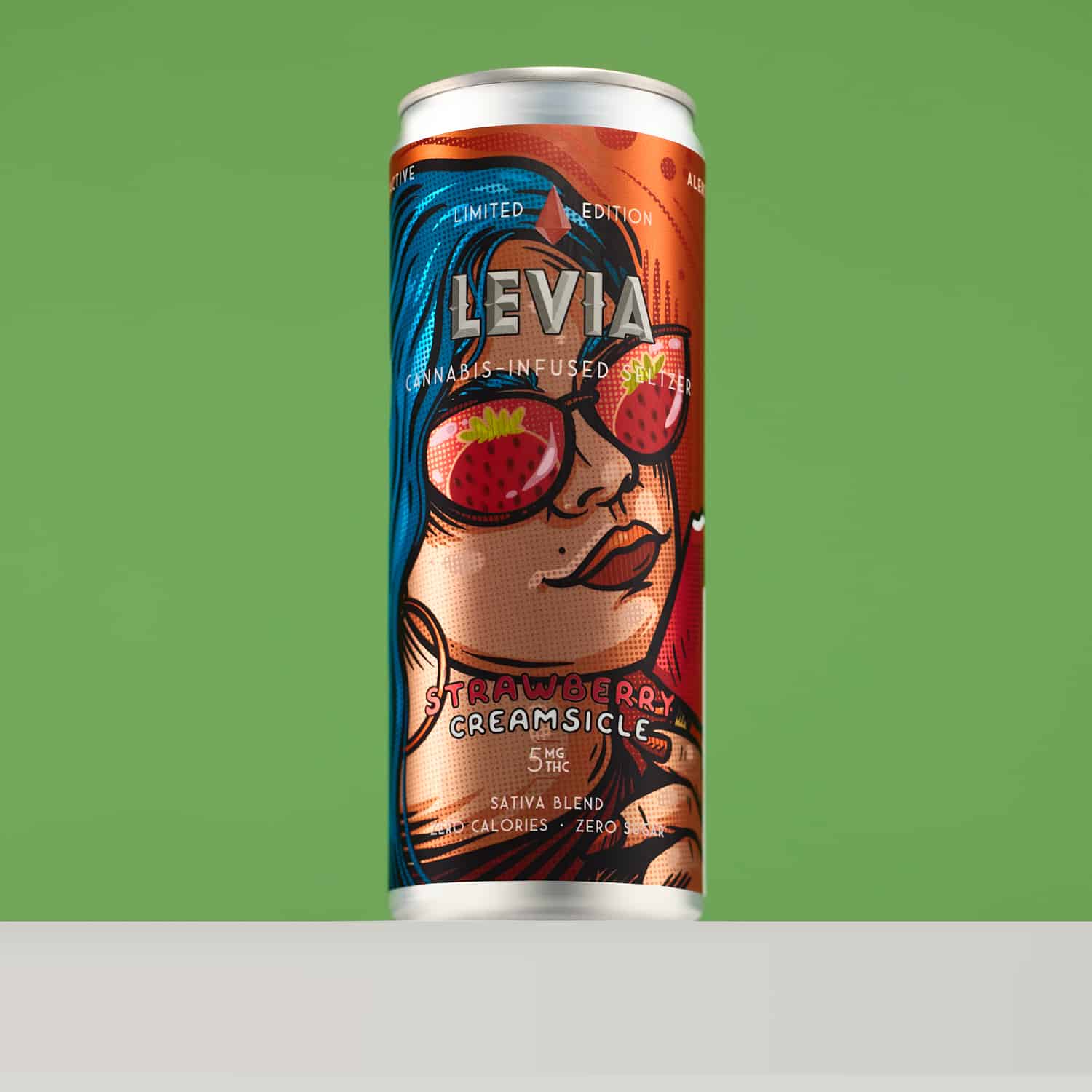
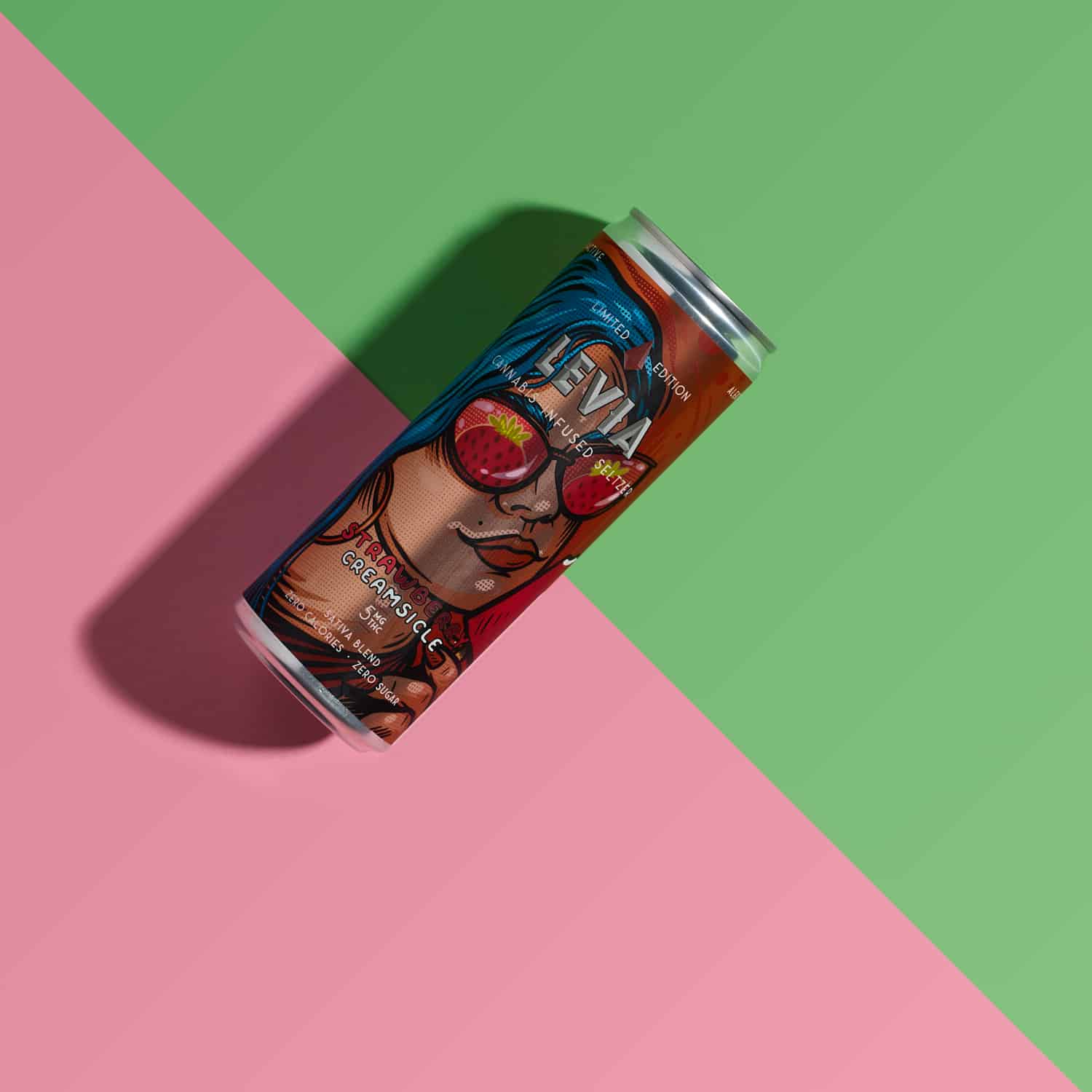
Craig Capello Photography
The resulting cans are striking, featuring a bold image of a hip, blue-haired lady looking effortlessly cool as strawberries reflect from her sunglasses. If I were shopping for a cannabis beverage and going off of artwork, I would absolutely select this one. Who wouldn’t want to look that effortlessly cool?
Collaborating with local artists is an effective marketing strategy, especially when used for limited-edition releases. After all, if consumers don’t act fast, they’ll never have a chance to enjoy the art.
But it’s not just the “act now!” factor. These collaborations create opportunities for the brand to reach different customers.“Fans of the artists find themselves sharing our product and imagery on social media in an effort to support the artist, which also benefits our brand because now we tap into a new audience,” Bosnan explains.
Unlike Perrigo, who established his brand off of artistic partnerships from the get-go, Bosnan had to be strategic about their first and ensuing partnerships. “I spend many nights scrolling through local artists’ websites, social media channels, and New England brewery sites in an effort to source innovative collaborators,” he explains.
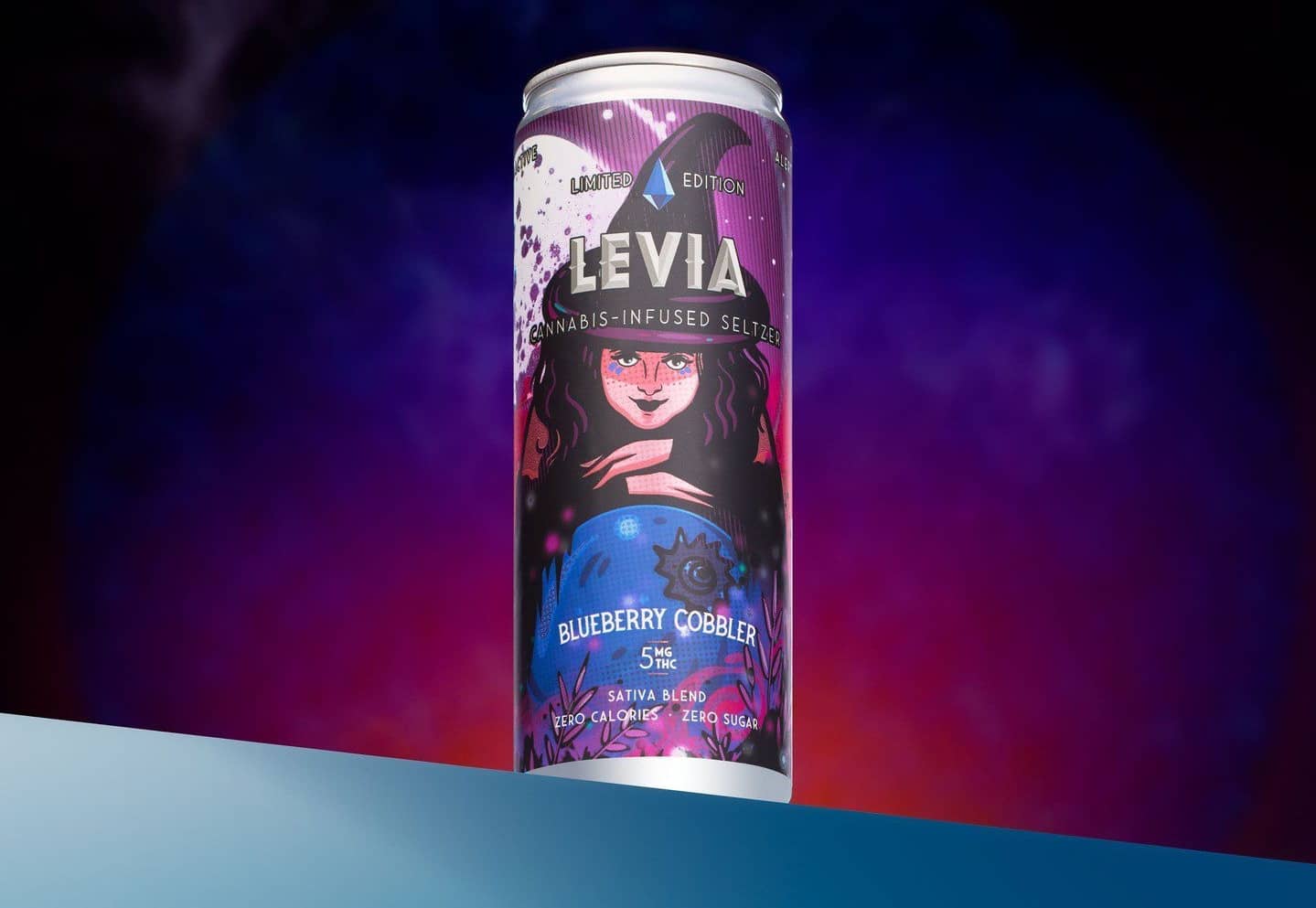
What is he looking for? Work that fluidly translates on a can, and artists with a good sense of space to make the most of the wrap-around style needed to fit the shape. More importantly, a passion for the plant. “I feel the artist needs to have a relationship with cannabis–it’s a special plant and we love working with artists who appreciate the industry and the mission behind our product.”
So far, it’s paid off.
“We have been really lucky and have not come up against many challenges. All the artists we have worked with (Dean McKeever, Hailey Bonia, Brandon Cyr, and Patrick Pollard) have met all deadlines and exceeded expectations. They each bring a different interpretation and style to the LEVIA limited-edition launches.”
The collaboration trend extends to devices. PAX recently released a limited-edition collaboration with Akiko Tsuji, a multi-medium artist, editor, publisher, and fashion designer. The company rolled out four unique designs to speak to the individuality of the cannabis consumer: HARMONY, NOSTALGIA, CAT & GODDESS.
Each limited-edition PAX device has a soft, sleek, and calm feel to it, while being unique enough to speak to different types of customers. Like the limited-edition drops from LEVIA and Saints, the feelings created from looking at each of these designs can help inform a consumer’s decision.
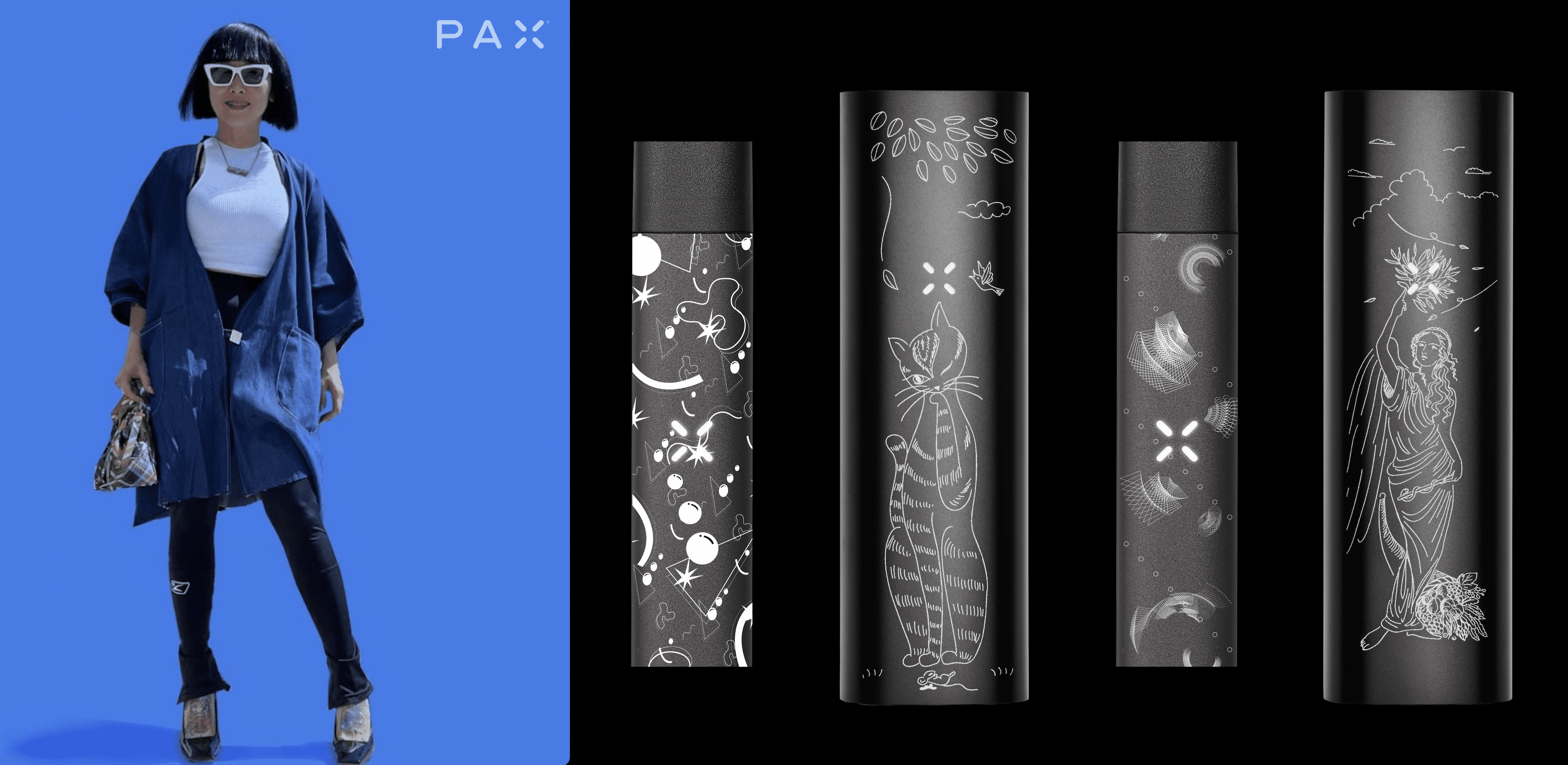
“Culturally, I think art and fashion plays a big role in identifying acceptance and pushing boundaries in the cannabis space,” explains Tsuji. “I always like this subtle disruption-effect that art and consequently design can facilitate –something not obviously intrusive, but something essential in details or tone, and that helps in educating the consumer that there is a difference in quality of products.”
From SKYMINT’s limited-edition products benefitting Transgender Michigan to Bhang’s new showcase for Peruvian street artist Conrad Flórez, there’s no question that creative collaborations provide an opportunity for brands to stand out. Truly authentic collaborations tune into the creative and community-focused side of cannabis–and that’s a good place to be.


